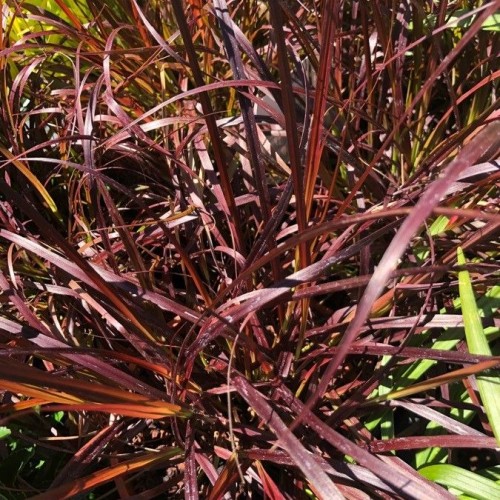
elephant grass
Pennisetum purpureum 'Princess'
Cycle:
Perennial
Watering:
Average
Hardiness Zone:
8 - 10
Flowers:
Flowers In Autumn
Sun:
Full sun
Leaf:
Yes
Growth Rate:
High
Maintenance:
Moderate
Drought Tolerant:
Yes
Salt Tolerant:
Yes
Care Level:
Medium
watering
Elephant grass should be watered once or twice a week for optimal growth. Water deeply so that it soaks into the soil, allowing the roots to reach out and absorb all the moisture. Avoid watering the leaves and foliage directly, as this can cause the plant to become stunted. Allow the top half-inch of the soil to dry out between waterings, and water until it runs out through the drainage holes of the pot. If the pot does not have drainage holes, only water lightly so that the soil does not become soggy and the plant can fully absorb the moisture.
sunlight
Elephant grass (Pennisetum purpureum 'Princess') prefers full sun for 6-8 hours each day, preferably in the morning hours.This seasonal grass prefers more opportunities to bask in the sun when it can, so during the summer months it will benefit from up to 12 hours of direct sunlight. One way to help the plant remain healthy in the colder months is to move it to a sun-filled spot or near a light source indoors.
pruning
Elephant grass (Pennisetum purpureum 'Princess') should be pruned every spring, just as the new growth begins emerging. Pruning should involve cutting back the older foliage to 2-thirds of its former height. Pruning should also be used to remove any dead or damaged growth. This is best done early in the spring, that way new growth and a full plant can be achieved during the growing season.
